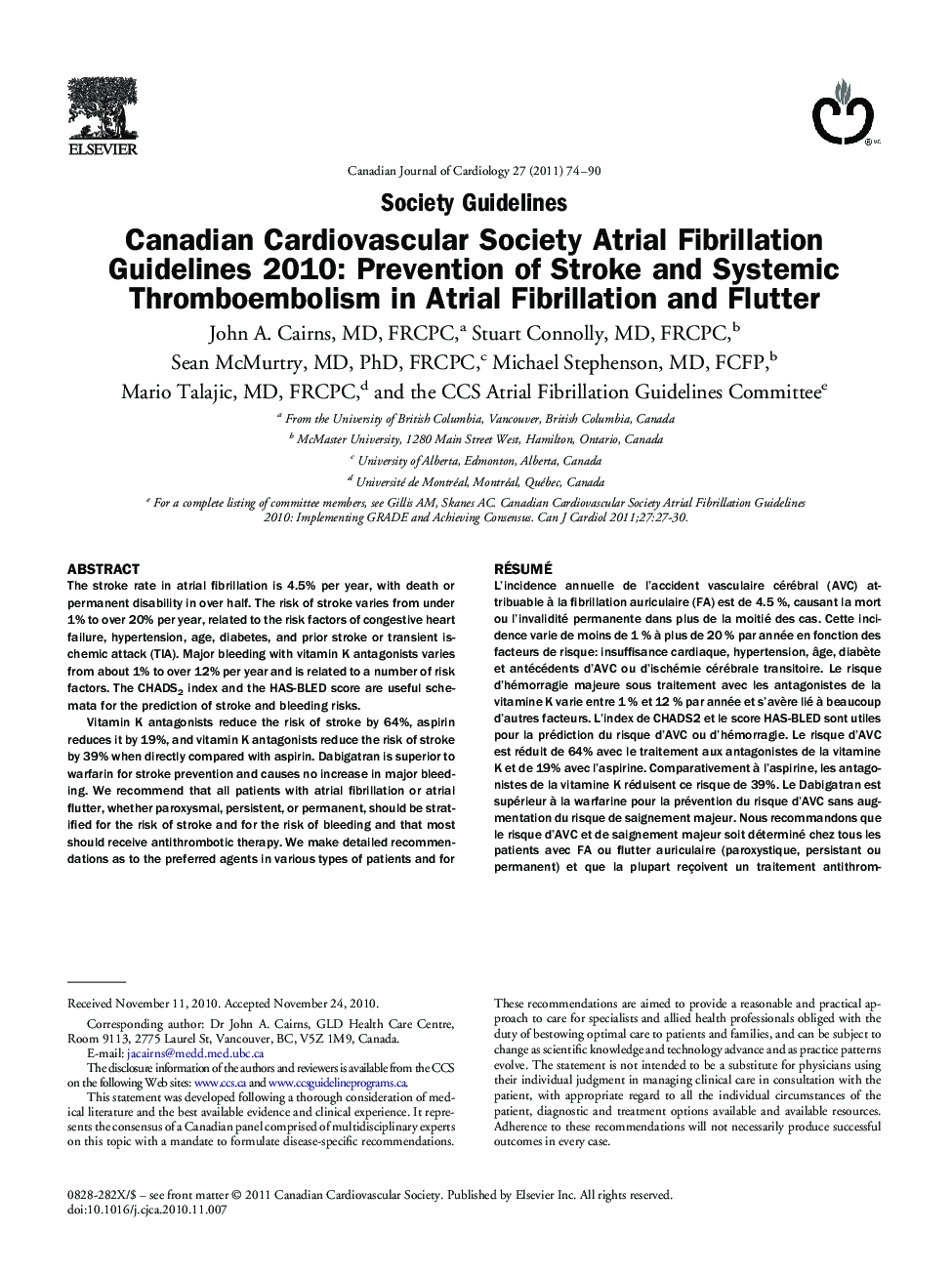| Article ID | Journal | Published Year | Pages | File Type |
|---|---|---|---|---|
| 2732364 | Canadian Journal of Cardiology | 2011 | 17 Pages |
The stroke rate in atrial fibrillation is 4.5% per year, with death or permanent disability in over half. The risk of stroke varies from under 1% to over 20% per year, related to the risk factors of congestive heart failure, hypertension, age, diabetes, and prior stroke or transient ischemic attack (TIA). Major bleeding with vitamin K antagonists varies from about 1% to over 12% per year and is related to a number of risk factors. The CHADS2 index and the HAS-BLED score are useful schemata for the prediction of stroke and bleeding risks.Vitamin K antagonists reduce the risk of stroke by 64%, aspirin reduces it by 19%, and vitamin K antagonists reduce the risk of stroke by 39% when directly compared with aspirin. Dabigatran is superior to warfarin for stroke prevention and causes no increase in major bleeding. We recommend that all patients with atrial fibrillation or atrial flutter, whether paroxysmal, persistent, or permanent, should be stratified for the risk of stroke and for the risk of bleeding and that most should receive antithrombotic therapy. We make detailed recommendations as to the preferred agents in various types of patients and for the management of antithrombotic therapies in the common clinical settings of cardioversion, concomitant coronary artery disease, surgical or diagnostic procedures with a risk of major bleeding, and the occurrence of stroke or major bleeding. Alternatives to antithrombotic therapies are briefly discussed.
RésuméL'incidence annuelle de l'accident vasculaire cérébral (AVC) attribuable à la fibrillation auriculaire (FA) est de 4.5 %, causant la mort ou l'invalidité permanente dans plus de la moitié des cas. Cette incidence varie de moins de 1 % à plus de 20 % par année en fonction des facteurs de risque: insuffisance cardiaque, hypertension, âge, diabète et antécédents d'AVC ou d'ischémie cérébrale transitoire. Le risque d'hémorragie majeure sous traitement avec les antagonistes de la vitamine K varie entre 1 % et 12 % par année et s'avère lié à beaucoup d'autres facteurs. L'index de CHADS2 et le score HAS-BLED sont utiles pour la prédiction du risque d'AVC ou d'hémorragie. Le risque d'AVC est réduit de 64% avec le traitement aux antagonistes de la vitamine K et de 19% avec l'aspirine. Comparativement à l'aspirine, les antagonistes de la vitamine K réduisent ce risque de 39%. Le Dabigatran est supérieur à la warfarine pour la prévention du risque d'AVC sans augmentation du risque de saignement majeur. Nous recommandons que le risque d'AVC et de saignement majeur soit déterminé chez tous les patients avec FA ou flutter auriculaire (paroxystique, persistant ou permanent) et que la plupart reçoivent un traitement antithrombotique. Nos recommandations font état des agents antithrombotiques à favoriser dans les contextes cliniques de cardioversion, maladie cardiaque athérosclérotique concomitante, procédures diagnostiques ou chirurgicales avec risque d'hémorragie majeure associée, et en cas d'AVC ou de saignement majeur. Les alternatives au traitement antithrombotique sont brièvement discutées.
